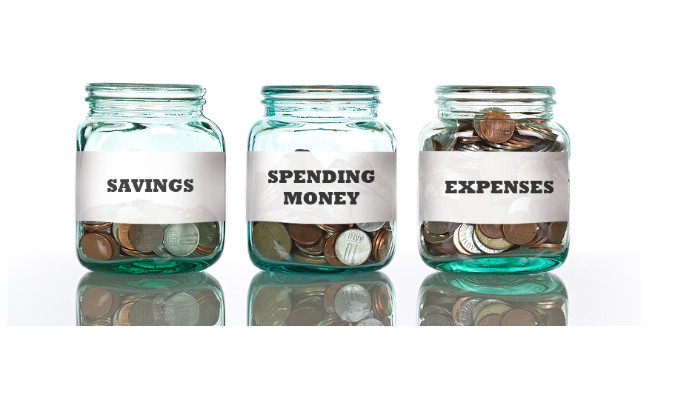The concept of monthly budgeting always felt like a routine that I just couldn’t shake off. Despite my best efforts, I found myself scrambling to manage expenses, stressing over every detail. Then, something happened that changed everything—I shifted to yearly planning. Not only did this approach streamline my financial management, but it also helped me save money more efficiently. Let me take you through this life-changing experience and explain why ditching monthly budgeting for yearly planning could be the financial strategy you’ve been missing out on.
Why I Decided to Ditch Monthly Budgeting
Monthly budgeting, while popular, wasn’t doing me any favors. Every month, I set out with a new budget and a fresh set of expectations, but something always went wrong. Either an unexpected expense would pop up, or I’d forget about a seasonal cost, leaving my budget in ruins. The constant recalculating and adjusting took up so much mental energy, and I knew there had to be a better way.
The decision to ditch monthly budgeting wasn’t impulsive. It stemmed from recognizing the limitations of planning my finances month-to-month. I needed a bigger picture, a strategy that would allow for more flexibility and less stress. Enter yearly planning.
What Is Yearly Planning?
Yearly planning is essentially taking a bird’s-eye view of your finances for the entire year. Instead of breaking things down month by month, you plan your income, expenses, savings, and financial goals over the course of 12 months. This gives you a more comprehensive understanding of your financial trajectory, making it easier to spot trends, account for larger expenses, and build savings.
This approach provides a sense of control, allowing you to anticipate both the good and bad months. With yearly planning, it’s much easier to account for those once-in-a-year expenses like vacations, holidays, or insurance payments.
How Yearly Planning Helped Me Save Money
The shift to yearly planning transformed my financial life in ways I didn’t expect. Here’s how it helped me save money:
- Better Visibility: By looking at the entire year, I could see the “big picture” and spot patterns. This allowed me to anticipate high-expense months and save for them in advance, eliminating the panic that usually accompanied unexpected costs.
- Long-Term Savings Goals: Yearly planning enabled me to set clearer, more achievable savings goals. I could map out exactly how much I needed to save each month, which helped me stay consistent and build up my savings steadily.
- Reducing Impulse Spending: Since I had a broader view of my finances, I didn’t feel as constrained by each month’s budget. This gave me a sense of freedom and led to fewer impulse purchases because I knew exactly how much flexibility I had in my budget.
- Avoiding Debt: With a yearly plan in place, I could predict when I’d need more money and prepare for those periods. This helped me avoid dipping into credit cards or loans, saving me from paying high-interest fees.
The Differences Between Monthly Budgeting and Yearly Planning
The key difference between monthly budgeting and yearly planning is how each approach frames your financial outlook. Monthly budgeting focuses on the short-term, trying to balance your income and expenses each month. While that can work for some, it often leads to constant recalculating, missed goals, and frustration.
Yearly planning, on the other hand, gives you a long-term view. Instead of trying to make every month perfect, you allow for ups and downs, knowing that over the year, things will even out. Here’s a quick comparison:
| Aspect | Monthly Budgeting | Yearly Planning |
|---|---|---|
| Focus | Short-term (30 days) | Long-term (12 months) |
| Flexibility | Low—each month has to balance | High—room for fluctuation |
| Stress Level | High—constant adjustments | Low—plan for the year’s highs/lows |
| Savings Goals | Often short-term and limited | More comprehensive and achievable |
| Expense Tracking | Detailed, often micro-managing expenses | Big-picture focus on overall trends |
Creating a Yearly Plan: Step-by-Step Guide
Switching to yearly planning may sound overwhelming at first, but it’s actually quite simple once you get the hang of it. Here’s a step-by-step guide to help you embrace yearly planning and potentially save money in the process.
1. Assess Your Previous Year’s Finances
Before you start planning, take a look at your finances from the previous year. Review your income, expenses, and any savings you managed to accumulate. This will give you a sense of where your money went and help you identify areas for improvement.
2. Set Clear Financial Goals
Decide what you want to achieve in the upcoming year. Do you want to build an emergency fund? Pay off debt? Save for a vacation? Having clear, long-term goals will give you direction and motivation throughout the year.
3. List Your Annual Expenses
Make a list of all the expenses you expect to encounter during the year, including:
- Fixed costs like rent or mortgage payments, utilities, and insurance.
- Variable costs like groceries, dining out, and entertainment.
- Seasonal or annual costs like holidays, birthdays, or vacations.
4. Divide Your Goals and Expenses Over 12 Months
Once you’ve listed your goals and expenses, divide them into manageable chunks over the year. For example, if you need $1,200 for a vacation, set aside $100 each month. If you have a high expense month coming up, plan to save extra in the preceding months.
5. Track Your Progress Quarterly
Instead of checking your budget every month, which can become tedious, track your progress quarterly. This will give you enough time to make adjustments if needed without getting bogged down in the day-to-day details.
The Psychological Benefits of Yearly Planning
One of the most surprising changes I noticed after switching to yearly planning was the psychological benefit. With monthly budgeting, I felt constantly stressed, always thinking about the next deadline or bill. I was trapped in a cycle of short-term thinking, and my finances felt like a never-ending struggle.
Yearly planning, on the other hand, gave me the freedom to breathe. Knowing I had a long-term plan in place provided peace of mind. I no longer stressed over minor fluctuations in my budget because I knew that over the year, everything would balance out. The predictability and structure of yearly planning reduced my financial anxiety significantly.
How Yearly Planning Encourages Smarter Spending
One unexpected outcome of yearly planning is that it naturally led me to become a more mindful spender. When I used to budget monthly, I often found myself thinking, “Oh, I can squeeze this in—I’ll just adjust my budget next month.” But with a yearly plan, I had a clearer picture of how impulsive spending would affect my overall finances.
I began to weigh purchases against my long-term goals. Was it worth sacrificing my vacation fund for a spontaneous night out? Could I delay a big purchase until a more financially stable month? This shift in mindset helped me make better, more thoughtful spending decisions, ultimately saving me even more money.
Common Mistakes to Avoid When Switching to Yearly Planning
While yearly planning can be transformative, there are a few common mistakes that can trip people up when making the switch.
Not Accounting for All Expenses
It’s easy to forget about annual or irregular expenses, like car insurance, property taxes, or holiday shopping. Make sure you account for these in your yearly plan to avoid surprises later on.
Failing to Adjust Throughout the Year
Yearly planning isn’t set in stone. Life happens, and sometimes you’ll need to adjust your plan. It’s important to check in periodically and make adjustments as necessary. However, don’t obsess over every little deviation—remember, the goal is to take a long-term view.
Ignoring Income Fluctuations
If your income isn’t consistent throughout the year, make sure to account for that. During higher-income months, set aside extra savings to cover leaner months. This will help smooth out the bumps and keep your finances on track.
Conclusion
Ditching monthly budgeting and embracing yearly planning was one of the best financial decisions I’ve ever made. Not only did it help me save money, but it also reduced my stress and gave me a clearer understanding of my financial picture. By taking a long-term approach to money management, you can avoid the constant recalculating and anxiety that often comes with monthly budgeting. Whether you’re looking to save for a big goal, reduce debt, or simply get a better handle on your finances, yearly planning could be the key to transforming your financial life.
FAQs
How does yearly planning help save money?
Yearly planning allows you to anticipate expenses and save for them in advance, reducing the likelihood of surprise costs. It also helps you set long-term financial goals and track your progress, which can lead to more consistent savings.
Is yearly planning better than monthly budgeting?
For many people, yes. Yearly planning offers a broader perspective, which can reduce stress and lead to smarter financial decisions. However, some individuals prefer the structure of monthly budgeting. The best approach depends on your personal financial habits.
How do I get started with yearly planning?
Start by reviewing your past year’s finances, setting clear goals, and listing your expected expenses. Then, divide these expenses and goals over 12 months, and track your progress quarterly to make adjustments as needed.
What if unexpected expenses come up?
Yearly planning accounts for flexibility. While you should have an emergency fund for unexpected costs, you can adjust your yearly plan to accommodate surprises without completely derailing your financial goals.
Does yearly planning work for irregular incomes?
Yes, yearly planning can be especially beneficial for those with irregular incomes. By anticipating high- and low-income months, you can smooth out your cash flow and avoid financial stress during leaner times.
Can yearly planning help with debt repayment?
Absolutely. Yearly planning allows you to set long-term debt repayment goals and spread them out over the year. This makes it easier to stay on track without feeling overwhelmed by monthly payments.








Leave a Comment